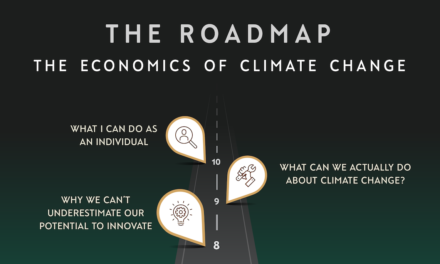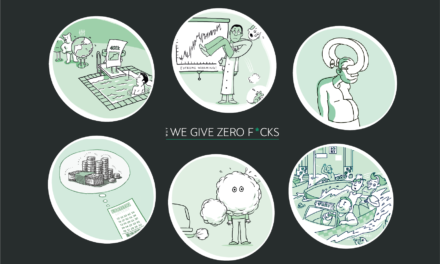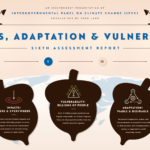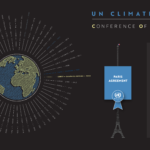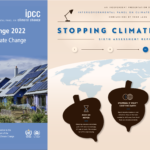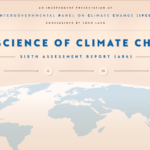The Emissions GAP
BY JOHN LANG
Every year, the United Nations Environment Programme (UNEP) releases the most intuitive report in the world, to the world. Called The Emissions GAP Report, it does one thing exceptionally well — and a few things reasonably well.
Let’s stick with the exceptional.
It provides one number — well, technically four — to policymakers the world over. This year, that number was 13: the global community is 13 gigatonnes of carbon dioxide equivalent shy of meeting the Paris Agreement’s target of “well below 2°C”. As above, one ‘GtCO2e.’ is about equal to the GHG emissions generated by transport in the EU over the course of a single year.
Before we dig deeper, a quick Paris Agreement recap
- Under the Paris Agreement — hailed by then French President Hollande as a ‘major leap for mankind’ — each country makes its own unilateral pledge to reduce emissions. Yip, they choose their own targets all by themselves.
- These unilateral pledges are called NDCs (Nationally Determined Contributions) and are essentially how much each country plans to reduce their emissions in the coming years.
- Every five years, at something called The Global Stocktake, countries “shall” and “will” (in accordance with their Paris Agreement promises) assess their reduction pledges and increase the ambition of these pledges as they, and we, move through the century. Think of it as countries constantly having to “ratchet up” their pledges to cut their emissions. The first official Global Stocktake is in 2023; it’s incredibly important.
OK, back to UNEP and their GAP Report
UNEP adds up all the countries’ pledges and compares these against what the science and the scientists are telling us. In its ninth edition since 2010, the report outlines what has to happen in order to avert climate catastrophe later in the century; that is, it tells us what emissions pathways we have to steer ourselves onto, now, in order to keep the world’s average temperature increase to below 2°C later. They include our pathways to 1.5°C too — but, let’s all be honest for a second, at this rate we’re sailing past 1.5°C.
The beauty of this report lies in it telling us all how much still needs doing, in the starkest yet simplest of terms:
What we, the world’s humans, must do to have a 66% chance of keeping temperature to below 2°C by 2100:
- If all conditional pledges are achieved by countries, the world, collectively, still needs to reduce emissions every year by the equivalent of “the GHG emissions generated by transport in the EU over the course of a single year” x 13.
- If all unconditional pledges are achieved by countries, the world, collectively, still needs to reduce emissions every year by the equivalent of “the GHG emissions generated by transport in the EU over the course of a single year” x 15.
What we, the world’s humans, must do to have a 66% chance of keeping temperature to below 1.5°C by 2100:
- If all conditional pledges are achieved by countries, the world, collectively, still needs to reduce emissions every year by the equivalent of “the GHG emissions generated by transport in the EU over the course of a single year” x 29.
- If all unconditional pledges are achieved by countries, the world, collectively, still needs to reduce emissions every year by the equivalent of “the GHG emissions generated by transport in the EU over the course of a single year” x 32.
Damn
Yip, literally the challenge of the century. But there is a dash of good news in there. For example, a number of countries have already reached ‘peak emissions’, and more are on track to do so soon. By 2030, up to 57 countries — representing 60% of global emissions — will have peaked, assuming, of course, those countries meet their pledges.
And like all good climate reports these days, this one makes it abundantly clear that we’ve still got a chance, albeit a perilously slim one:
“Technically, it’s still possible to keep global warming to well below 2°C, BUT governments will need to make much bolder pledges to reduce their emissions.”
Feeling helpless?
There’s a lot that individuals can actually do. From voting for politicians who demand #ClimateAction to joining an advocacy organisation. Or by simply talking about an issue, that all too often, gets swept aside for something more pressing or entertaining. Let’s face it, it’s not exactly a conversation starter — but climate change needs to be.
Future infographics will explore what individuals can actually do — a subject I’ve taken far too long to tackle.
Until then, thanks UNEP. Here is their own dynamic visualisation. And for those tempted to dig a little deeper, here’s their Executive Summary.
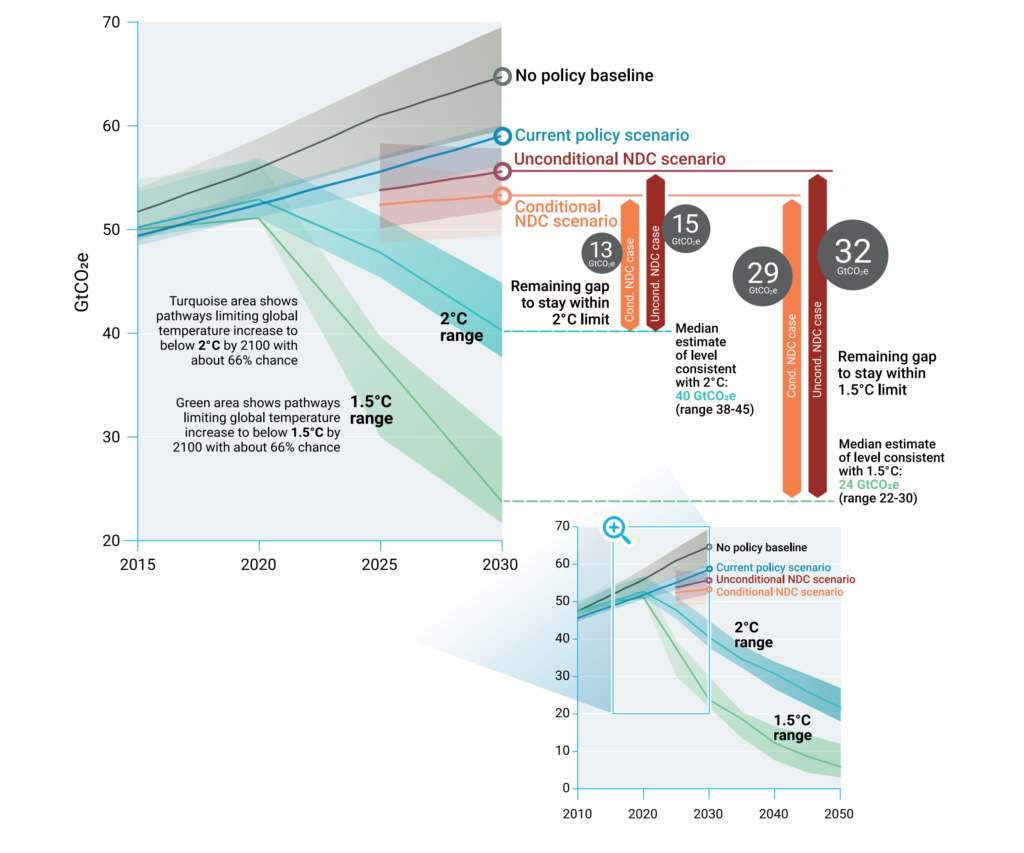
Global GHG emissions under different scenarios and the emissions gap in 2030 (Credit: UNEP)
